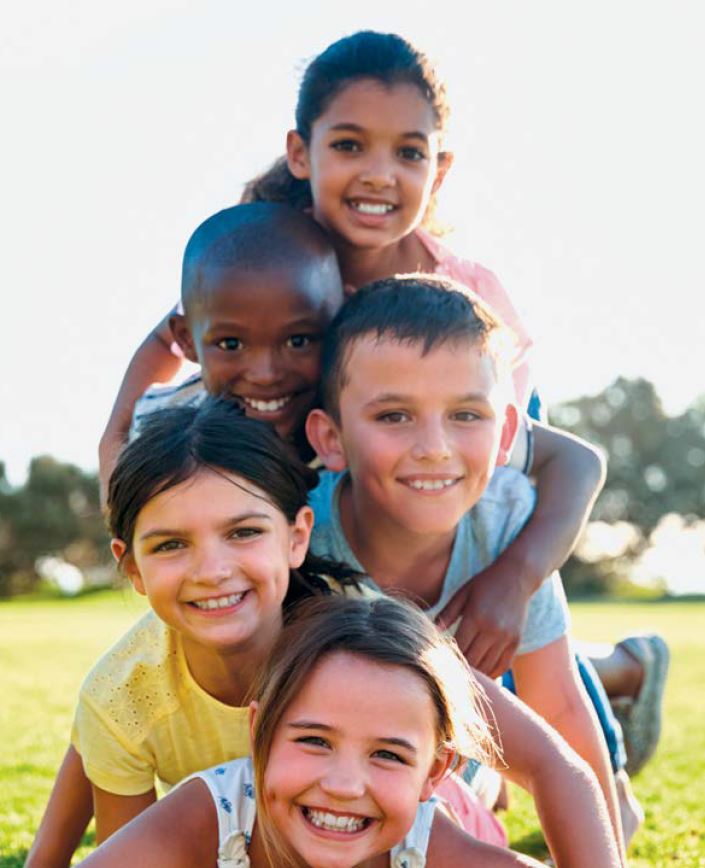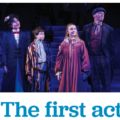It’s a situation that happens almost inevitably in every family, including mine:
You’re at the grocery store with your 3-year-old when, with a fully outstretched arm, he points his finger at the man picking up milk across the aisle and says (at top volume), “That guy is in a wheelchair!”
It’s embarrassing. And you have absolutely no idea of what to do, which makes it even more uncomfortable.
The thing is, a lot of us grew up in an era in which we tried to make the case that everyone is the same. We swept difference under the rug and tried to say that we were blind to it all.
And now, because of that, we don’t know how to talk about difference and diversity!
But, indeed, we are all different. Everybody is unique and special and important in who they are.
So when your child sees difference and talks about it, that’s OK. In fact, if your child (by the time he’s 3 or 4) hasn’t brought up that he’s seeing differences, you as a parent should actually make a point to bring it up.
Here are three keys to fostering the values of acceptance and inclusion in your family.
1: Expose your kids to differences.
It’s key to start doing this by preschool age. You’re usually spending more time with your kids when they’re this age compared to when they start school. And that makes it a prime time for talking and introducing them to what they’ll encounter in the years ahead.
Ask yourself: Are my kids experiencing differences in their day-to-day life at this age? Do they have exposure to different races, ethnicities and religions? Have they met people who have a disability, visible or not? Do you know any families with different family structures than your own?
If the answer to those questions is “no” or “kind of,” I would urge you to seek out opportunities that will change your answer to a confident “yes.”
Find out what cultural fairs, concerts and museum exhibits are happening around town, and check them out as a family. (See mnparent.com/global or mnparent.com/calendar for ideas.)
Also be purposeful when you’re reading and watching movies or TV. Make it a point to choose stories with characters who might not look, sound, act or move like your kids. I highly recommend exploring commonsensemedia.org.
As a parent myself, I use this site all the time. It helps you judge how appropriate the media your kids consume really is. And, it has dozens of lists that identify specific books, apps, movies and TV shows that can be used to teach your child about a variety of topics and values (all sorted by age) — including:
- Books that promote tolerance and diversity
- Books with characters of color
- How to help your kids find books with diverse characters
- Apps and games with diverse characters
- Movies that defy gender stereotypes
- Movies that inspire compassion, empathy, humility, integrity, communication and courage
- TV shows with diverse characters
- TV shows that inspire compassion, empathy, humility and integrity.
2: Talk about difference.
And keep talking about it.
It’s really important that we resist the urge to shush our kids when they bring up difference. Shushing sends the message that the topic is taboo — even though it’s not — and makes your children feel ashamed. It will cause them to stop talking about their feelings with you, and instead keep them inside.
It’s when thoughts and emotions become internal that we start developing biases. And sadly, as you know, much of the violence we see today in our world is based in biases.
Instead, encourage your child to describe what she’s seeing, what she thinks about it and how it makes her feel. The first conversation you have is going to be the awkward one. But once you establish that it’s OK to talk about differences, the follow-up talks get easier. They just become part of your daily life.
When your children start seeing how their friends treat others and what beliefs other children hold, you want them to share those things (and what they themselves are believing) with you. And if you’ve set the groundwork for open conversation, they will.
So, going back to my opening example: What should you do when you and your child encounter a man in a wheelchair at the grocery store?
First and foremost, acknowledge that, yes, he’s different. But also expand the conversation (reading off the man to judge if you should have this talk right in front of him, or if you should move it to the side).
Talk with your child about how being in a wheelchair might affect the man, and also about who he is in our world. Point out how he’s at the grocery store shopping, just like your child and you are.
Show your child that the milk in his cart is the same as the milk you drink. And, if the man seems like he may be receptive to talking, ask your child, “Should we go chat with him and see how he’s doing today?”
When these situations come up in our family, we talk briefly in the moment, and then we follow-up on what happened again later. Often that means a conversation at dinner that gets the whole family talking. It’s our job as parents to ask questions that bring the conversation to the next level and encourage our kids to talk more.
- Why do you think he might be in a wheelchair?
- What if there was a kid at school in a wheelchair?
- What if your friends were bullying or being mean and saying he couldn’t play with them because he looks different?
Oftentimes kids already know the answer to these questions. They’ve already learned basic rules at school and how to treat people. But it’s important to help them know how to stand up and say, “He’s a kid just like me and you and we’re going to play with him.”
Finally, a note on your child’s developmental stage: Remember that even though older kids, teenagers and adults are able to talk about these topics on a more complex level, younger children are not.
State things simply, and be open to answering lots of questions.
3: Model appropriate interactions.
Each of us has internal biases, as hard as they can be to acknowledge. After all, we were all raised in different ways and exposed to different things. We need to be honest with ourselves that these biases exist. And we need to be aware that they can affect our reactions to the people we come in contact with.
Our biases are why we need to be so purposeful in how we interact with people. Our kids notice when our reaction to someone is different. And they’ll mimic those reactions. So we need to work hard to be friendly to everyone. And we need to make a point to always use positive language that’s not offensive.
We also need to be hypervigilant of stereotypes.
There are plenty of them that play out in the media. And when we see them we need to call them out. We need to be specific about what they are, so that our children can learn to identify them themselves. And, we need to model how to speak up (and out) against them. We need to verbalize how stereotypes can make us and others feel.
Similarly, if Grandma — or another relative or friend — says something that’s biased or offensive in a family conversation, we need to speak up. We need to say what she said is not OK — and make it clear it’s OK to say so. If you brush off what Grandma says, your child learns that the way to deal with these kinds of remarks is to simply ignore them.
That’s not a lesson you want to teach. Your job is to model what it looks like to stand up for what’s right in all situations. Because the skills you model will be the skills your children pick up and practice themselves.
As a pediatrician, I’ve worked with diverse patient populations, including people who are Latino, African-American, Asian as well as white. Some — like my own two children — are a blend of multiple ethnicities.
Some come from well-to-do families, and some are from families living in poverty. Some of my patients have disabilities. Others are a family member to someone with a disability. Not all of the kids I see in clinic have a mom. Not all have a dad.
Some have neither, some have two of each and some have parents that don’t look like them — whether that’s because they were adopted or because there’s simply not a strong family resemblance.
Diversity is broad. And those examples don’t even cover the half of it. Preparing your child for our diverse world — including people with special needs — isn’t about giving them a laundry list of differences they might see.
Rather, it’s about being intentional in the conversations and interactions you have with your child and with everyone else.
No matter what our background or experiences, we all need to be preparing our children for encountering and accepting differences. And to do so, we need to be purposeful.
Dr. Rachel Tellez is a mother of two who has practiced pediatrics since 1998. She began working at Park Nicollet Clinic–Brookdale in Brooklyn Center in 2017 and was drawn to the job in part due to the value the organization places on diversity and inclusion. She speaks Spanish fluently, as does her husband, who grew up in Mexico. This article was originally published on HealthPartners.com.















